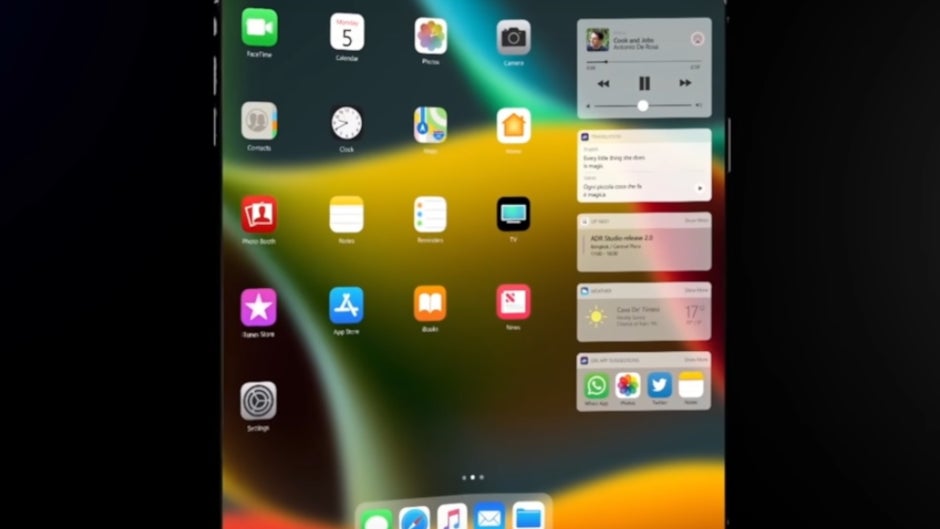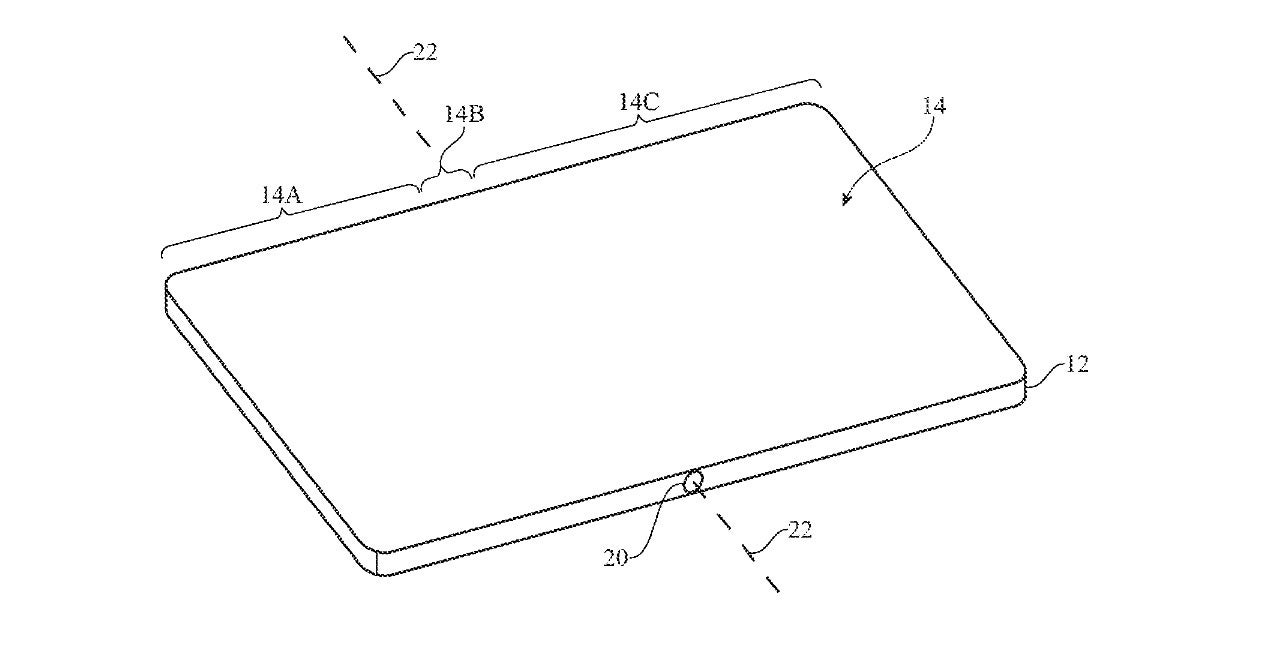You might be excited to learn why Apple is seeking to patent a self-healing screen

Does anyone out there remember 2013's LG G Flex handset? The device arced inward on the top and the bottom. At the same time, the Samsung Galaxy Round arced inward from the left and right. They were certainly unique looking phones but you wouldn't call them folding phones in light of what is available these days. You might recall though that the LG G Flex had an interesting feature: a self-healing rear cover that could repair hairline scratches or scrapes made by keys or other tools.
A patent application shows that Apple is working on a self-healing display
Of course, there were some limitations to the self-healing. For example, the feature worked better in warmer temperatures, and not all scratches would disappear. In many cases, the "disappearance" of such marks was dependent on the angle that you were holding the rear cover at. The reason that we are bringing up the name of a long-forgotten phone that had some self-healing qualities on the back is because of a patent application filed by Apple with the U.S. Patent and Trademark Office (USPTO). Titled Electronic Devices With Flexible Display Cover Layers, Apple seeks legal protection for a method it devised to lessen the damage on displays that get folded or rolled up. And the technology would allow the damage sustained by the display to heal itself.

Image from Apple's patent application for a self-healing screen
The patent says that the screen would consist of multiple elements with one layer having self-healing properties. The patent application says, "The display cover layer may include a layer of elastomer in the flexible region of the display cover layer for increased flexibility. Self-healing may be initiated or expedited by externally applied heat, light, electric current, or other type of external stimulus."
While Apple includes the phrase "self-healing" several times in the documentation, there is very limited information about how it intends to have the display do this. And to be clear, a dropped phone that has cracks like a spider web is not exactly what Apple has in mind for a self-healing feature. The patent application does explain what the tech giant does have in mind. "During operation of an electronic device, the display cover layer for the electronic device may be scratched or dented," writes Apple. "To improve the aesthetics of the electronic device, it may be desirable for the presence of scratches and dents to be minimized. To help mitigate the number of dents, scratches, or other imperfections in a display cover layer, the display cover layer may include a layer of self-healing material."
As we noted earlier in this article, the fact that Apple is seeking such a patent could be a sign that it is working on a folding iPhone. Last year, we passed along a concept video that showed what such a device might look like. Last month, Twitter tipster Ice Universe tweeted that Apple had asked Samsung to send it samples of foldable displays. Apple reportedly will make its foldable device an iPad and it will run iPadOS. This would seem to indicate that a foldable Apple device will open from a smartphone-sized screen into a tablet-sized one.
In other words, it would appear that Apple is not looking to produce a foldable in the style of the Motorola Razr; the latter folds open to create a phone with a 6.2-inch display. Instead, it would seem that Apple is more interested in manufacturing a foldable device like the Samsung Galaxy Z Fold 2 that opens to reveal a large 7.6-inch screen. The latest speculation calls for a foldable iPhone iPad to be introduced in 2023. And by then, Apple might have received a patent on the self-healing display and could have the feature perfected by that year.
Follow us on Google News














Things that are NOT allowed:
To help keep our community safe and free from spam, we apply temporary limits to newly created accounts: